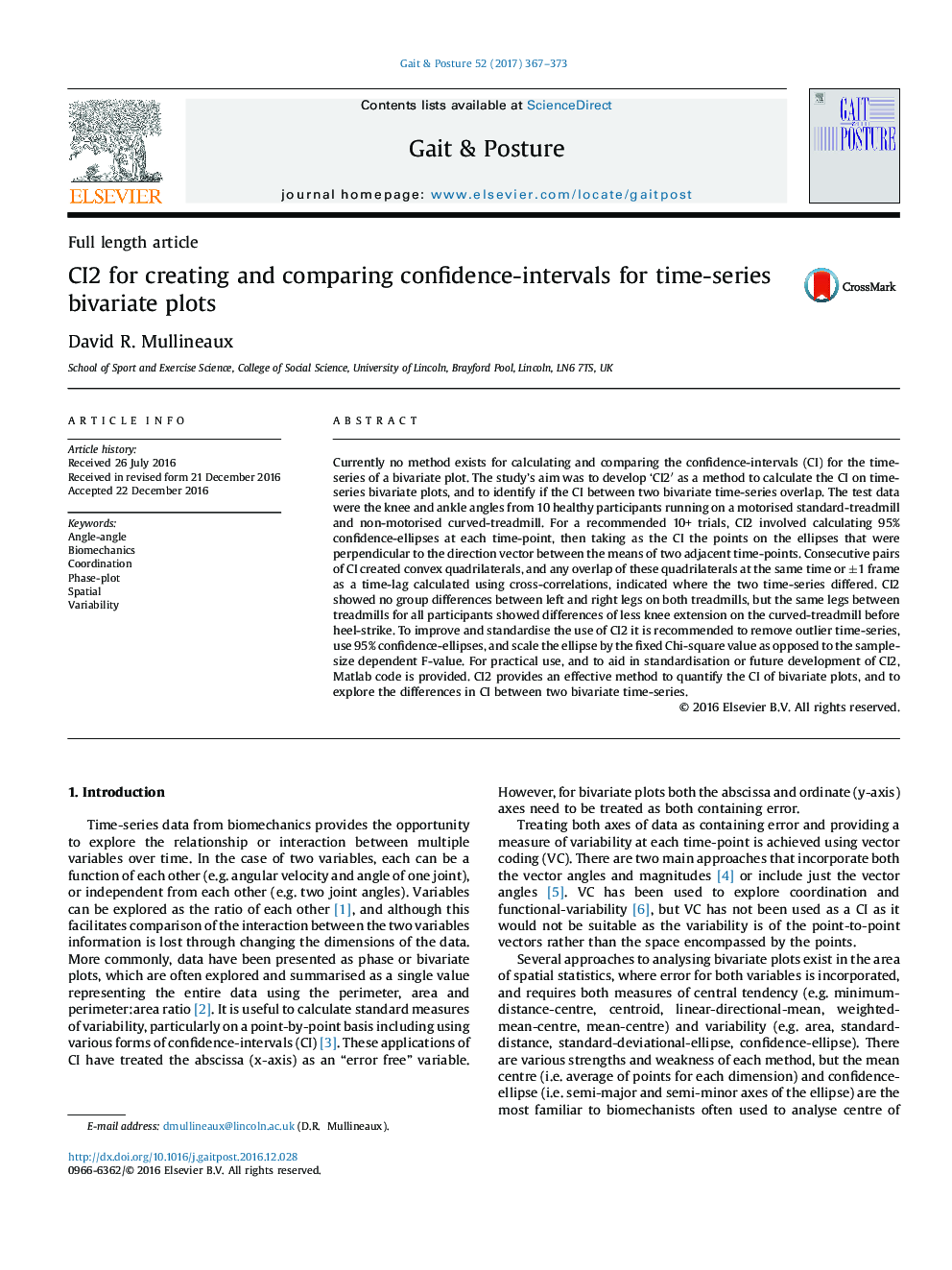| Article ID | Journal | Published Year | Pages | File Type |
|---|---|---|---|---|
| 5707567 | Gait & Posture | 2017 | 7 Pages |
Abstract
Currently no method exists for calculating and comparing the confidence-intervals (CI) for the time-series of a bivariate plot. The study's aim was to develop 'CI2Ⲡas a method to calculate the CI on time-series bivariate plots, and to identify if the CI between two bivariate time-series overlap. The test data were the knee and ankle angles from 10 healthy participants running on a motorised standard-treadmill and non-motorised curved-treadmill. For a recommended 10+ trials, CI2 involved calculating 95% confidence-ellipses at each time-point, then taking as the CI the points on the ellipses that were perpendicular to the direction vector between the means of two adjacent time-points. Consecutive pairs of CI created convex quadrilaterals, and any overlap of these quadrilaterals at the same time or ±1 frame as a time-lag calculated using cross-correlations, indicated where the two time-series differed. CI2 showed no group differences between left and right legs on both treadmills, but the same legs between treadmills for all participants showed differences of less knee extension on the curved-treadmill before heel-strike. To improve and standardise the use of CI2 it is recommended to remove outlier time-series, use 95% confidence-ellipses, and scale the ellipse by the fixed Chi-square value as opposed to the sample-size dependent F-value. For practical use, and to aid in standardisation or future development of CI2, Matlab code is provided. CI2 provides an effective method to quantify the CI of bivariate plots, and to explore the differences in CI between two bivariate time-series.
Related Topics
Health Sciences
Medicine and Dentistry
Orthopedics, Sports Medicine and Rehabilitation
Authors
David R. Mullineaux,
